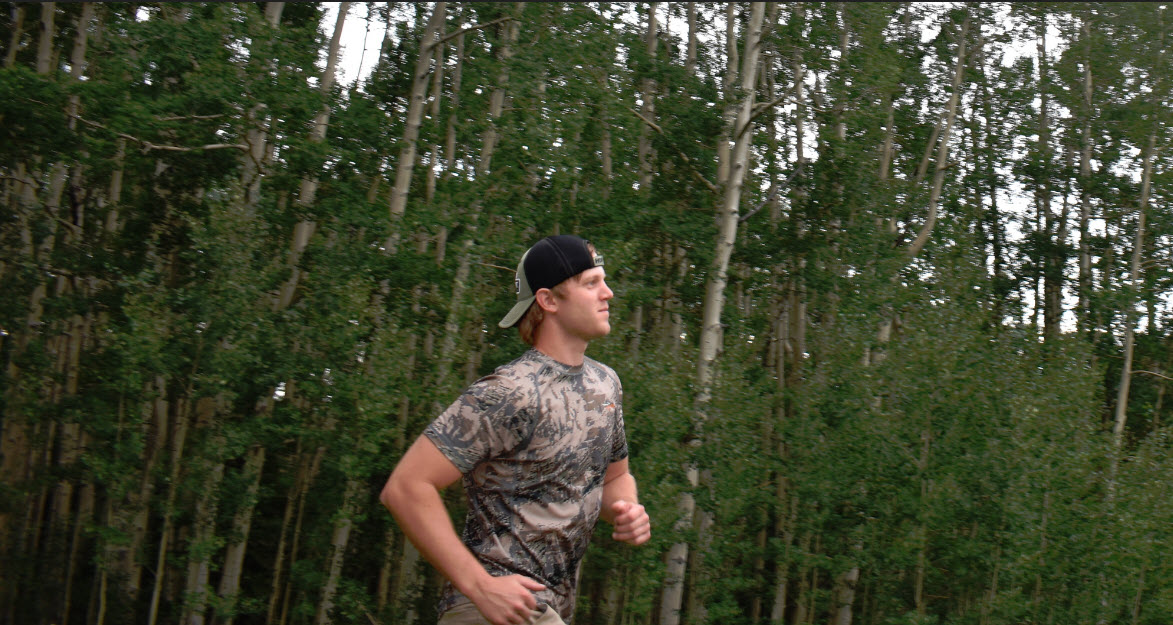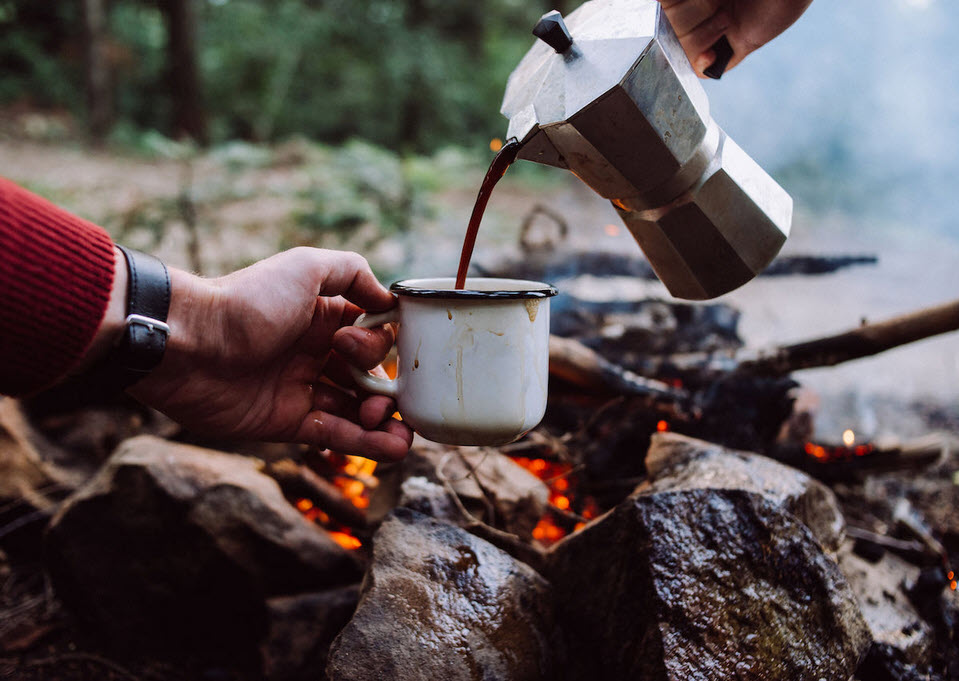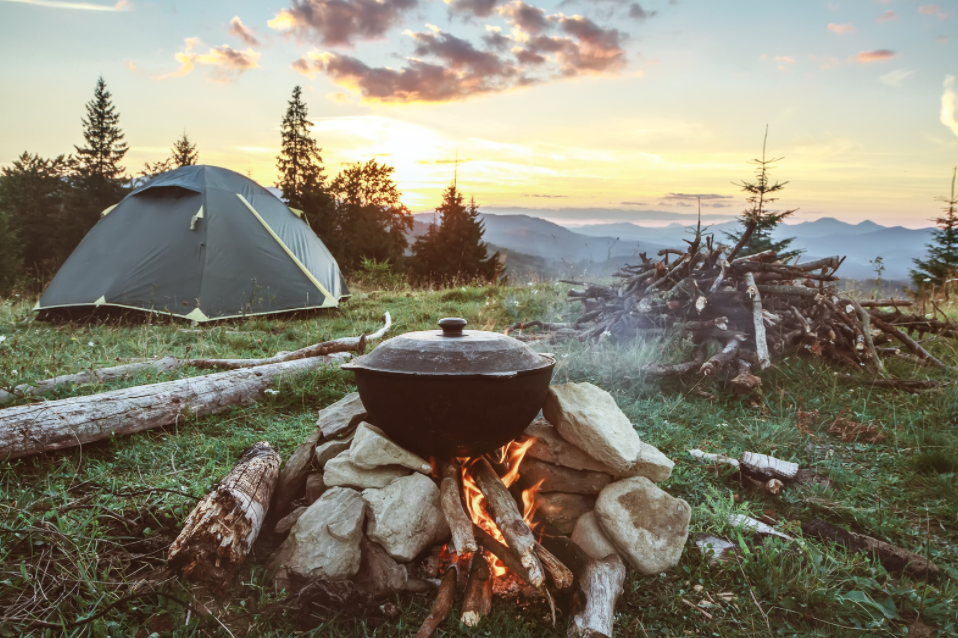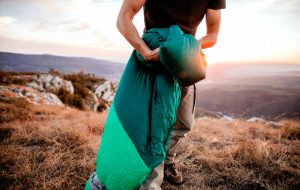
Going on an adventure, whether that’s camping or hiking, or backpacking, requires you to have the right gear. And when you’re choosing your gear, the prime thing to keep an eye out for is your sleeping bag. It’s the most important tool in your arsenal, and having the wrong sleeping bag can easily ruin your adventures.
That being said, there are just so many to choose from. And no two bags are the same, with things like insulation and temperature ratings making a massive difference. But we’re here to help, and we’ll go over the key thing you should keep your eyes peeled for when shopping for a new sleeping bag.
Page Contents
Down or Synthetic Insulation?
This is the first question you’ll need to answer. Both types have pros and cons, and the choice you make will have a massive impact on overall comfort, weight, packing size, and price. Let’s consider both.
Down-filled sleeping bags are considered to be the more premium option, with slightly higher prices and a huge advantage in the weight department. They’re very lightweight and can be packed to a very, very small size. There’s also the durability factor, in which they have the upper hand over synthetic ones, as well as the fact that they retain the insulation performance for at least a couple of years.
However, they are a bit more expensive, and for some out of budget. To add to this, you must be careful not to get them wet, because they take a very long time to dry out. Quality options deal with this by adding a water-resistant treatment, but it’s not 100% waterproof.
Synthetic sleeping bags are, on the other hand, more affordable, and in many scenarios a better choice. Yes, they’re heavier and pack a bit larger, but they also perform admirably even in wet conditions. Getting a synthetic bag wet doesn’t mean that you’re losing the insulation properties, and to add to that, they dry fairly quickly. This makes them ideal for situations where you might think you’ll get some rain, or the air humidity is higher than average.
It is the size and weight that makes them a somewhat worse choice for people who want to be packed as compact as possible, but if you’re on a budget, or appreciate the weather-related versatility, they’re a great choice.
What’s the Right Temperature Rating?
This is the second big thing you’ll notice with sleeping bags – they’re usually made for a specific season. There are summer bags and winter bags, and there are the more versatile three-season bags, that try to cover every scenario but are actually perfect for spring and autumn.
Summer bags are made for higher temperatures, usually above 30 degrees Fahrenheit. Note that you should be considering the temperature at night, and if it drops down below 30, you might be a bit cold with such a bag. With a winter bag, on the other hand, anything above 15 degrees and you’ll find yourself unzipping the bag to get some fresh air inside – they’re made for cold weather, some even for freezing temperatures. Between 15 and 30 degrees, you want to be in a three-season bag for the best experience.
Here’s something you might not consider: if you want to play it safe, get a bag that’s made for temperatures slightly lower than the ones you’re expecting. Being warm in a bag allows you to unzip the zipper slightly and lower the temperatures. But if you’re cold, there’s not much you can do.

Also, consider all the other factors – clothing, sleeping pad, wind, and air humidity. The temperature ratings are made for an “average sleeper”, and your body might not fit those criteria. Play it safe.
What Shape Do You Go For?
Pose this question to an experienced camper, and they’ll tell you that the perfect bag will give you room to stretch inside, and even roll over in it. A rectangular bag is the perfect starting point because it gets you plenty of room to move around and it doesn’t feel restrictive at all. There are some models with a full zipper as well, you can use them as a comforter.
If you’d rather go for a more snug fit, a mummy bag is a good option. Made for colder weather, they’re made to fit the average body, but you can’t move around in one that much. If you need to roll over, you’ll need to do that with your bag, which is a bit tricky.
And of course, you could go for a double bag – that one is meant for couples, is pretty big, and comes in a rectangular shape. It’s a matter of personal preference, really.
How to select your sleeping bag for an outdoor activity?
The outdoor activity you’re planning to have will also impact the type of sleeping bag you need. It’s one thing when you go camping in the front-country and when back[packing for a week. Let’s look at the sleeping bags to buy according to your outdoor activity.
Camping
The sleeping bag for camping isn’t one you want to carry in the pack for many miles. Camping sleeping bags are cumbersome, heavy and created for comfort. They make the best choice for family car camping trips and front country experiences. They’re not very technical, so they’re more affordable than other types of sleeping bags.
In theory, you can use any sleeping bag for camping. However, the accent should be on comfort, so make sure to get one that gives you the most comfortable experience.
As long as the sleeping bag has the temperature rating for the season you’re camping, you can spend as little or much as you want. Get the shape you find comfortable and the fill you need for the season.
Backpacking
When you need a sleeping bag for backpacking, you need to focus on weight and compressibility. You don’t want to carry a bulky sleeping bag that takes essential storage space. The lighter the bag is, the better it will be for your backpacking.
Look for a sleeping bag that provides the best balance between compressibility and weight. Don’t forget to consider the warmth either. The rule of thumb for backpacking sleeping bags is to be as compressible and lightweight as the temperature will allow.
Seek to buy a light sleeping bag that keeps you warm and comfortable at night. High fill power down and low denier shell fabrics are ideal as they’re also compressible. Make sure you have the budget for it, nevertheless. Your sleeping bag shouldn’t be heavier than 2lbs.
Alpine climbing/mountaineering
Selecting a sleeping bag for mountaineering is similar to choosing one for backpacking, but your focus should be on warmth and water resistance. Look for a sleeping bag that is light and insulated. To achieve such performances, sleeping bags for alpine climbing are made with high-end materials and innovative technologies—expect to open your wallet big! The shell materials will have waterproof and breathability abilities. Look for models with draft-resistant zippers, well-fitting hoods, resistance to condensation, and incredible amounts of down. These sleeping bags should be small when packed and lightweight as well!
Which shape of sleeping bag should you get?
Sleeping bags have different shapes, so keep reading to find out more:

Rectangular
Rectangular sleeping bags are the most common for camping. The shape is comfortable for sleeping, but rectangular sleeping bags sit on the heavyweight side. There’s a lot of dead space, so such bags won’t keep you very warm.
Some models come with zippers, and you can also use the rectangular-shaped bags as blankets.
Double bags
Double bags are ideal for couples and represent the heaviest and largest models. Get one only if you’re 100% sure this is what you need.
Double bags made for mountaineering are perfect when going with your partner. One can carry the sleeping bag and the other the tent or food.
Mummy bags
These are the lightest models and not the most comfortable sleeping bags for some people. They’re great at keeping you warm since they don’t really have dead space. Ensure that the mummy bag you buy isn’t too tight for your body, as you still need some air circulating your body.
Specialized shapes
Semi-rectangular and Nemo’s spoon bags are specialized shapes that you can also choose. Semi-rectangular combine both the rectangular and mummy bags. Nemo’s spoon bags have an hourglass shape that works fantastic for side sleepers.
Quilts
With quilts, you will lay right on the sleeping pad and place the quilt around your body. Quilts typically come with easy-to-adjust and removable straps so that they stay in place. They are lightweight and don’t have zippers.
Women’s specific sleeping bags
Sleeping bags made for women are narrower in the shoulders, wider in the hips when compared to unisex models. They come in a wide range of shorter lengths and have more insulation than unisex models.
Pay attention to the zippers!
Look for sleeping bags that come with snag-free zippers. The last thing you want when camping is not getting in/out of your sleeping bag quickly. Large and sturdy teeth are ideal on zippers as they will zip/unzip with ease. Check out the backing along the zipper—a stiff backing will stop the fabric from bunching.
Is it left or right?
It’s as easy as it sounds: if you’re right-handed, buy a sleeping bag with the zipper on the left. Pick the model with the zipper on the right if you’re left-handed. When you’re lying on your back, it will be a lot more comfortable to use your dominant hand and use the zipper.
Which size should you get?
The length of the sleeping bag depends on your height, and you shouldn’t get a bag that is too long or too short. When the sleeping bag is too fast, your head and feet will press against the ends of the bag, compressing the insulation and reducing its efficiency.
Buying a sleeping bag too long for you isn’t a good idea either. You will have a lot of dead space and need more time to get warm. Even so, it’s better to take longer than a shorter sleeping bag. You can use the extra space to put some items that need to stay warm throughout the night (boot liners and electronics).
Sleeping bag lengths can vary from one manufacturer to another. Typically, you will find regular and long for men and women.
- Men’s Regular: 78in long (it fits persons up to 6′)
- Men’s long: 84in (it fits persons up to 6’6″)
- Women’s Regular: 72in (for women up to 5’6″)
- Women’s long: 78in (for women up to 6′)
Faqs
What size is a child’s sleeping bag?
Sleeping bags labeled as “youth” or “kid” will fit up to 5ft or 60 inches of height. Some “youth” bags will fit up to 64 to 66 inches. It’s quite a big sleeping bag and many toddlers and young campers will fall short of this height.
Are there several sizes for sleeping bags?
Sleeping bags for men come in two standard lengths with regular for people up to 6ft in height and long, up to 6ft 6 inches. People as tall as 5ft 6 can find the short models a lot more comfortable than the other two sizes.
How can you tell the rate for the sleeping bag?
Look for the temperature rating tag. It’s typically found on the inside of the bag and sometimes it’s in a pocket for more comfortable use. Some labels will give the number in degrees, so it’s easy to know the temperature rating for the bag.
Should you buy a synthetic sleeping bag?
If you want the warmest sleeping bag, try your best to buy a down-fill model; it has a fantastic warmth-to-packability ratio and durability. Synthetic bags aren’t that bad either, as they’re also light, warm, and more technical than in the past. Additionally, synthetic sleeping bags work better in wet conditions than the down alternatives.
What does GSM mean for sleeping bags?
When you look for a sleeping bag, you will notice the GSM name a lot. GSM refers to grams per square meter and it’s a measure of warmth. Sleeping bags with goose or duck-down insulation can come with a specific rating, which is the “down-fill power.” The average for this rating is between 400 and 500.









